TITLE OF THE SYNOPSIS:-
“Conceptual designs development & demonstrations of a
WIRELESS DATA AND VOICE COMMUNICATION THROUGH INFRARED-LED”
OBJECTIVES:-
To Design a circuit of an electronic infrared communication system.
Develop new ideas to implement this circuit purposely.
To study the circuitry and different types of components & DTMF generator, DTMF decoder, op-amp and infrared-LED in the circuit.
INTRODUCTION
For years, infrared LED has been merely a system for piping light around corners and into the inaccessible places to allow the hidden to be lighted. But now, infrared LED has evolved into a system of significantly greater importance and use. Throughout the world, it is now being used to transmit voice, television and data signals as light waves. Its advantages as compared with conventional coaxial cable or twisted wire pairs are manifold. As a result, millions of dollars are being spent to put these light wave communication systems into operation.
One of the most interesting developments in recent years in the field of telecommunication is the use of laser light to carry information over large distances. It has been proved in the past decade that light wave transmission through laser light is superior than that achieved through wires and microwave links. Typically, infrared LED has a much lower transmission loss per unit length (0.15-5db/km) and is not susceptible to electromagnetic interference. Economically also, it serves our purpose. The ever increasing cost and the lack of space available in the congested metropolitan cities asks for advent of a less costly system.
The conventional telephonic systems use copper wires, which easily get oxidized and as such require high maintenance cost. The laser light being made of glass are non-reactive and hence economical. Also, the noise pick up by the copper wire or in electrical signals is quite substantial whereas in laser light, the noise pick up is negligible.
Basic elements of a infrared LED system
Applications
(i) Applications for video transmission include high quality video Trunked from studio Transfeter, Broadcast CATV video, Video Trunking within city or between cities, Baasedand Video for closed.
BLOCKDIAGRAM
block diagram not visible due to image format problems hope to remove this problem soon………..
CONSTRUCTION AND WORKING
MIKE: Its converts sound signals into electrical signals.
AMPLIFIER (A): Signals from mike are amplified so that it can drive to infrared-LED.
INFRARED-LED: It carries signals.
PHOTO TRANSISTOR: The electrical signals are regained from the optical signals.
AMPLIFIER (B): Energy of signals is amplified to drive the speaker.
SPEAKER: Electrical signals which are amplified are reconverted into sound signals at the speaker.
DTMF CODER: It is generates the DTMF signal corresponding to the number entered from the keyboard.
DTMF DECODER : It is fed to DTMF decoder which gives the binary output corresponding to the signal received from the transmitter.
DECODER DRIVER : To drive the 7 segment display.
The circuit
The main part of Circuit is an amplifier. This sound signals (even at a distance of 2 meters from the mic) are picked up by the condenser microphone and converted into electrical variation, which are amplified by the op-amp. (Operational amplifier) IC- 741 is use in the inverting mode with a single supply using divider network of resistor the gain of IC can be set be varying the feed back through R5/6 resistance (can place a 1M variable) here the output of IC is further amplified buy the push-pull amplifier using transistor BC.548/558 pair, in this circuit are R2 is feed back resistance with R1/8 and C1/3 to connected IC-741. The IC’s pin 2 is connect VR1 (variable resistance) through connect to O/P of T1 (transistor) also use 6volt DC. The microphone should be placed near the circuit with the shield wire to suppress tune. The output of the amplifier is taken from emitter of two transistors, with a filter C5 from speaker. Same process continues in the second amplifier.
CIRCUIT DESCRIPTION OF SWITCH SECTION
This project was based on photo diodes and photo transistor. Photo diodes had been used as a transmitter and photo transistor as a receiver. This project had been divided in two part, First part transmitter section and second part receiver section. Slide switch selected to voice communication and data.
TRANSMISSIONSECTION :When switch key is pressed, circuit is energised. The output of The transmit IR beams modulated at same frequency 1KHz. The receiver uses infrared module. The IR- signal form the transmitter is sensed by the receiver sensor.
RECEIVER SECTION:- This section is worked as a Flip-flop (Bistable). IC-3 is decade counter, its Pin No.14 is input and Pin No. 2 output. The output of frequency detector stage is used, via a flip-flop, to switch ‘ON’ or switch ‘OFF’ a LED alternately. The receiver uses infrared modules IR-signal from the transmitter is sensed by the sensor through and its output PIN 1 goes low and switched LED. IC-3 is worked on clock pulse which receives to infrared modules at Pin No. 14. Its output at Pin No 2 throughes high.
The output of IC-2 is also used for lighting LED-1 indicating presence of signal. When no signal is available output of sensor module goes high and transistor LED is switched ‘OFF’. When another signal arrives, LED is switched ‘ON’ and through clock pulse at Pin No. 14 of IC-3. This makes the LED to switch ‘ON’ the appliance at first pulse and ‘OFF’ the appliance at its Second pulse arrived at its sensor. Transmitter circuits works satisfactorily with 6-9V DC. Battery but receiver circuits needs 6V regulated supply. The CAMD CM8870/70C provides full DTMF receiver capability by integrating both the band-split filter and digital decoder functions into a single 18-pin DIP, SOIC,or 20-pin PLCC package. The CM8870/70C is manufactured using state-of-the-art CMOS process technology for low power consumption (35mW, MAX) and precise data handling. The filter section uses a switched capacitor technique for both high and low group filters and dial tone rejection. The CM8870/70C decoder uses digital counting techniques for the detection and decoding of all 16 DTMF tone pairs into a 4-bit code. This DTMF receiver minimizes external component count by providing an on-chip differential input amplifier, clock generator, and a latched three-state interface bus. The on-chip clock generator requires only a low cost TV crystal or ceramic resonator as an external component.
Notes:
1. dBm = decibels above or below a reference power
of 1mW into a 600. load.
2. Digit sequence consists of all 16 DTMF tones.
3. Tone duration = 40ms. Tone pause = 40ms.
4. Nominal DTMF frequencies are used.
5. Both tones in the composite signal have
an equal amplitude.
6. Bandwidth limited (0 to 3KHz) Gaussian Noise.
7. The precise dial tone frequencies are
(350Hz and 440Hz) ±2%.
8. For an error rate of better than 1 in 10,000
9. Referenced to lowest level frequency component
in DTMF signal.
10. Minimum signal acceptance level is measured with
specified maximum frequency deviation.
11. Input pins defined as IN+, IN–, and TOE.
12. External voltage source used to bias VREF.
13. This parameter also applies to a third tone injected onto
the power supply.
14. Referenced to Figure 1. Input DTMF tone level
at –28dBm.
COMPONENTS USED
RESISTANCE:
R1, 150W
R2,R11,R12 100kW
R3, R7 10KW
R4, R8 4.7kW
R5,R6,R9,R10 15KW
R13 220K W
R14 1KW
R15-R22 150W
VR-1,VR-2 1MW Variable Resistance
CAPACITOR:
C1,C2,C4,C5 0.1 mfd (104 pf)
C3 220 mfd
MIKE Condensor Microphone
SEMICONDUCTOR:
IC1- UM91215B (DTMF CODER)
IC2, IC-3 741 (OP AMP)
IC-4 CM8870 (DTMF DECODER)
IC-5 74LS47 (DECODER)
T1,T3 NPN BC548
T2,T4 PNP BC558
LED Light Emitting Diode
Pt. Photo Transistor
MISCELLANEOUS:
IC Base 8 Pin (2pcs.)
Speaker 8 ohms
Optical Fibre General purpose
PCB General purpose
Slide Switch DPDT
Battery 6 volt DC
CIRCUIT DAIGRAM
RECEIVER
AUTOMATION SECTION
BLOCKDIAGRAM
CONSTRUCTION AND WORKING
IR-LED: It carries signals and converted into optical signals.
PHOTO TRANSISTOR: The electrical signals are regained from the optical signals.
DTMF CODER: It is generates the DTMF signal corresponding to the number entered from the keyboard.
DTMF RECEIVER/DECODER : It is fed to DTMF decoder which gives the binary output corresponding to the signal received from the transmitter.
DEMULTIPLEXER/ 4-16 LINE DECODER: It takes the 4 line BCD input and selects respective output one among the 16 output lines. It is active low output and drives to relay.
RELAY DRIVER : Its section controls the relay. It has a Not Gate and four NPN transistors. NPN transistor is drive to relay which works as a switching. Relay controls the AC devices.
WORKING OF AUTOMATION CONTROL SECTION:
Signal Decoding Unit:
This is the main unit of this system. This unit consists of a DTMF to BCD decoder IC MT 8870, 4 to 16 line decoder IC 74154 and hex inverter gate IC 4049. The working of all the above IC’s are mentioned here before.
The DTMF to BCD decoder IC MT8870 takes a valid tone signal from the IR transmitter section. Then the tone signal is converted in to 4 bit BCD number output obtained at pins from 11 to 14. This output is fed to the 4-16 line decoder IC74154. This IC takes the BCD number and decodes. According to that BCD number it selects the active low output line from 1 to 16 which is decimal equivalent of the BCD number present at its input pins. Since the low output of this IC the output is inverted to get logic high output. This inversion is carried out by hex inverter IC 4049- built on TTL logic. This IC inverts the data on its input terminal and gives inverted output.
3. Device switching unit:
This unit consists of a tri state buffer and a D flip flop. After making confirmation of current status of the device to alter the status of that device, you have to change the mode of the tri state buffer by making the control input high. This is done by pressing the ‘#’ key. When this key is pressed the output of the 4-16 line decoder goes low The output of tri state buffer is latched by using a D flip-flop. Here this D flip flop is used in the toggle mode. For each positive going edge of the clock pulse will trigger the flip-flop.
After a period of 5 seconds the output of the IC 6 goes low and puts the tri state buffer in the high impedance state. Therefore to change the status of any other device is to be done after the output of IC 6 goes low, again ‘#’ key is pressed to make the tri state buffer act as input –output state and the respective code of the device is pressed.
4. Power supply unit:
For the proper working of this local control section except the local telephone set it needs a permanent back up which gives a 5V back up continuously. This is achieved by using a 5V regulated power supply from a voltage regulated IC 7805. This 5V source is connected to all ICs and relays. This IC gets a backup from a 9V battery.
5. Relay driver circuit:
To carry out the switching of any devices we commonly use the relays. Since the output of the D flip flop is normally +5V or it is the voltage of logic high state. So we cannot use this output to run the device or appliances. Therefore here we use relays, which can handle a high voltage of 230V or more, and a high current in the rate of 10Amps to energize the electromagnetic coil of the relays +5V is sufficient. Here we use the transistors to energize the relay coil. The output of the D flip-flop is applied to the base of the transistor T2 – T5 via a resister. When the base voltage of the transistor is above 0.7V the emitter-base (EB) junction of the transistor forward biased as a result transistor goes to saturation region it is nothing but the switching ON the transistor. This intern switches on the relay. By this the devices is switches ON. When the output of D flip-flop goes low the base voltage drops below 0.7V as a result the robotic devices also switches OFF.
CIRCUIT DESCRIPTION:
This system is divided into two sections, 1: Remote Section 2: automation Control Section.
REMOTE SECTION:
This unit consists of IR transmitter section, which is present in the remote place. The figure (E) shows the circuit diagram of the DTMF encoder, which resembles the DTMF transmitter section. It uses DTMF encoder integrated circuit, Chip UM 91214B. This IC produces DTMF signals. It contains four row frequencies & three column frequencies. The pins of IC 91214 B from 12 to 14 produces high frequency column group and pins from 15 to 18 produces the low frequency row group. By pressing any key in the keyboard corresponding DTMF signal is available in its output pin at pin no.7. For producing the appropriate signals it is necessary that a crystal oscillator of 3.58MHz is connected across its pins 3 & 4 so that it makes a part of its internal oscillator.
Figure (E). Circuit diagram of the DTMF encoder
This encoder IC requires a voltage of 3V. For that IC is wired around 4.5V battery. And 3V backup Vcc for this IC is supplied by using 3.2v zener diode.
The row and column frequency of this IC is as on the fig. “B”. By pressing the number 5 in the key pad the output tone is produced which is the resultant of addition of two frequencies, at pin no. 13 & pin no.16 of the IC and respective tone which represents number ‘5′ in key pad is produced at pin no.7 of the IC. This signal is sent to the DTMF transmitter section through IR-LED.
ROBOTIC ARM CONTROL SECTION:
This is a control unit through which you can control your devices. This contains one DTMF transmitter section and a devices Control Section. The devices to be controlled must be connected to phototransistor through control unit. Control unit is kept with a sufficient backup.
devices control Section consists of a DTMF decoder, 4-16 line decoder/demultiplexer, D-flip-flops, and relay driver circuits. Before going into detail of the circuit, we will take a brief description about integrated circuits used in local control section.
MT 8870 DTMF decoder:
IC MT8870/KT3170 serves as DTMF. This IC takes DTMF signal coming via telephone line and converts that signal into respective BCD number. It uses same oscillator frequency used in the remote section so same crystal oscillator with frequency of 3.85M Hz is used in this IC.
Working of IC MT8870:
The MT-8870 is a full DTMF Receiver that integrates both band split filter and decoder functions into a single 18-pin DIP. Its filter section uses switched capacitor technology for both the high and low group filters and for dial tone rejection. Its decoder uses digital counting techniques to detect and decode all 16 DTMF tone pairs into a 4-bit code. External component count is minimized by provision of an on-chip differential input amplifier, clock generator, and latched tri-state interface bus. Minimal external components required include a low-cost 3.579545 MHz crystal, a timing resistor, and a timing capacitor. The MT-8870-02 can also inhibit the decoding of fourth column digits.
MT-8870 operating functions include a band split filter that separates the high and low tones of the received pair, and a digital decoder that verifies both the frequency and duration of the received tones before passing the resulting 4-bit code to the output bus.
The low and high group tones are separated by applying the dual-tone signal to the inputs of two 6th order switched capacitor band pass filters with bandwidths that correspond to the bands enclosing the low and high group tones.
Figure (F).Block diagram of IC MT8870
The filter also incorporates notches at 350 and 440 Hz, providing excellent dial tone rejection. Each filter output is followed by a single-order switched capacitor section that smoothes the signals prior to limiting. Signal limiting is performed by high gain comparators provided with by stresses to prevent detection of unwanted low-level signals and noise. The MT-8870 decoder uses a digital counting technique to determine the frequencies of the limited tones and to verify that they correspond to standard DTMF frequencies. When the detector recognizes the simultaneous presence of two valid tones (known as signal condition), it raises the Early Steering flag (ESt). Any subsequent loss of signal condition will cause ESt to fall. Before a decoded tone pair is registered, the receiver checks for valid signal duration (referred to as character- recognition-condition). This check is performed by an external RC time constant driven by ESt. A short delay to allow the output latch to settle, the delayed steering output flag (StD) goes high, signaling that a received tone pair has been registered. The contents of the output latch are made available on the 4-bit output bus by raising the three state control input (OE) to logic high. Inhibit mode is enabled by a logic high input to pin 5 (INH). It inhibits the detection of 1633 Hz.
The output code will remain the same as the previous detected code. On the M- 8870 models, this pin is tied to ground (logic low).
The input arrangement of the MT-8870 provides a differential input operational amplifier as well as a bias source (VREF) to bias the inputs at mid-rail. Provision is made for connection of a feedback resistor to the op-amp output (GS) for gain adjustment.
The internal clock circuit is completed with the addition of a standard 3.579545 MHz crystal.
The input arrangement of the MT-8870 provides a differential input operational amplifier as well as a bias source (VREF) to bias the inputs at mid-rail. Provision is made for connection of a feedback resistor to the op-amp output (GS) for gain adjustment.
The internal clock circuit is completed with the addition of a standard 3.579545 MHz crystal.
74154 4-16 line decoder/demultiplexer:
IC 74154 is a 4-16 line decoder, it takes the 4 line BCD input and selects respective output one among the 16 output lines. It is active low output IC so when any output line is selected it is indicated by active low signal, rest of the output lines will remain active high. This 4-line-to-16-line decoder utilizes TTL circuitry to decode four binary-coded inputs into one of sixteen mutually exclusive outputs when both the strobe inputs, G1 and G2, are low. The demultiplexing function is performed by using the 4 input lines to address the output line, passing data from one of the strobe inputs with the other strobe input low. When either strobe input is high, all outputs are high. These demultiplexer are ideally suited for implementing high-performance memory decoders.
Figure G. IC 74154 4-16 line decoder
All inputs are buffered and input clamping diodes are provided to minimize transmission-line effects and thereby simplify system design.
TRUTH TABLE:
IC 4013 D-flip-flop:
IC 4013 is a conventional D-flip-flop IC. This IC consists of two D flip-flops. These flip-flops are used to latch the data that present at its input terminal. Each flip-flop has one data, one clock, one clear, one preset input terminals.
(Above figure shows a single D-flip-flop)
Relay driver circuit:
To carry out the switching of devices we commonly use the relays. Since the output of the D flip flop is normally +5V or it is the voltage of logic high state. So we cannot use this output to run the device or appliances. Therefore here we use relays, which can handle a high voltage of 230V or more, and a high current in the rate of 10Amps to energize the electromagnetic coil of the relays +5V is sufficient. Here we use the transistors to energize the relay coil. The output of the D flip-flop is applied to the base of the transistor T2 – T5 via a resister. When the base voltage of the transistor is above 0.7V the emitter-base (EB) junction of the transistor forward biased as a result transistor goes to saturation region it is nothing but the switching ON the transistor. This intern switches on the relay. By this the device is switches ON. When the output of D flip-flop goes low the base voltage drops below 0.7V as a result the device also switches OFF.
Power supply unit:
NEED OF POWER SUPPLY:-
Perhaps all of you are aware that a power supply is a primary requirement for the test bench of a home experimenter’s mini lab. A battery eliminator can eliminate or replace the batteries of solid-state electronic equipment and 220V A.C. mains instead of the batteries or dry cells thus can operate the equipment. Nowadays, the sued of commercial battery eliminator or power supply unit have become increasingly popular as power source for household appliances like transceiver, record player, clock etc.
Summary of power supply circuit features:-
Brief description of operation: gives out well regulated +8V output, output current capability of 500mA.
Circuit protection: Built –in overheating protection shuts down output when regulator IC gets too hot.
Circuit complexity: simple and easy to build.
Circuit performance: Stable +8V output voltage, reliable Operation.
Availability of components: Easy to get, uses only common basic components.
Design testing: Based on datasheet example circuit, I have used this circuit successfully as part of other electronics projects.
Applications: part of electronics devices, small laboratory power supply.
Power supply voltage: unregulated 8-18V-power supply.
Power supply current: needed output current 500 mA.
Components cost: Few rupees for the electronic components plus the cost of input transformer.
Pin Diagram of 7808 Regulator IC
Pin 1: Unregulated voltage input
Pin 2: Ground
Pin3: Regulated voltage output
Component list
7808 regulator IC
2. 0-12 transformer
3. 1000uf and 100uf. Capacitor, at least 25V voltage rating.
DESCRITION OF POWER SUPPLY
This circuit is a small + 8 volts power supply. Which is useful when experimenting with digital electronics. Small inexpensive battery with variable output voltage are available, but usually their voltage regulation is very poor, which makes them not very usable for digital circuit experimenter unless a better regulation can be achieved in some way. The following circuit is the answer to the problem.
This circuit can give +8V output at about 500mA current. The circuit has overload and terminal protection.
CIRCUIT DIAGRAM OF POWER SUPPLY
The above circuit utilizes the voltage regulator IC 7808 and 7805 for the constant power supply. The capacitors must have enough high voltage rating to safely handle the input voltage feed to circuit. The circuit is very easy to build for example into a piece of Zero board.
For the proper working of this local control section except the mobile phone or local telephone set it needs a permanent back up which gives a 8V back up continuously. This is achieved by using a 8V regulated power supply from a voltage regulated IC 7808. This 5V source is connected to all ICs and relays. This IC gets a backup from a 9V battery.
Fig J. Circuit Diagram of Local Control Section.
USED COMPONENTS
SEMICONDUCTORS
(1) IC-1 ……… 7808
(2) IC-2…………. CM8870P
(3) IC-3…………. 74154
(4) IC-5-6………CD 4013
(5) IC-4……….. 4049
(6) IC7 ………… UM 91214B
(7) D1-D2 ………….IN 4007
(8) D3…………… 3V Zener
(9) LED ……………. Light Eammiting Diode
(10) T1-T6…………..(NPN) 368
(11) Crystal ………… 3.57 Mhz.
(12) Photodiode
(13) Phototransistor
RESISTOR
(1) R1……….330K OHm.
(2) R2……….. 100K OHm.
(3) R3,R4,R7 ………. 10K OHm.
(4) R5,R6, ………. 1K OHm.
(5) R8-R12…. 100 OHm.
CAPACITOR
(1) C1…………. 1000MFD.
(2) C2,C3…………. 0.1 MFD.
MISCELLANEOUS
(1) RELAY ………………. 6V \100 0Hm.
(2) TRANSFORMER…… 0-9 (Step down)




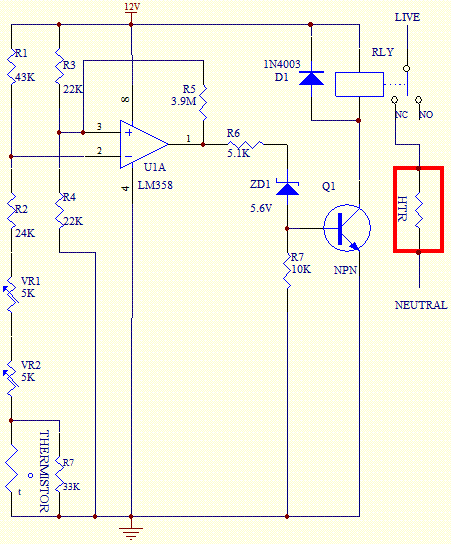
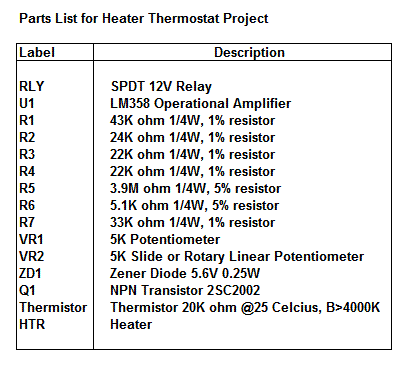
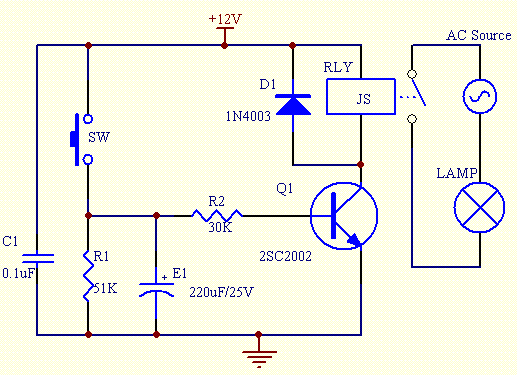

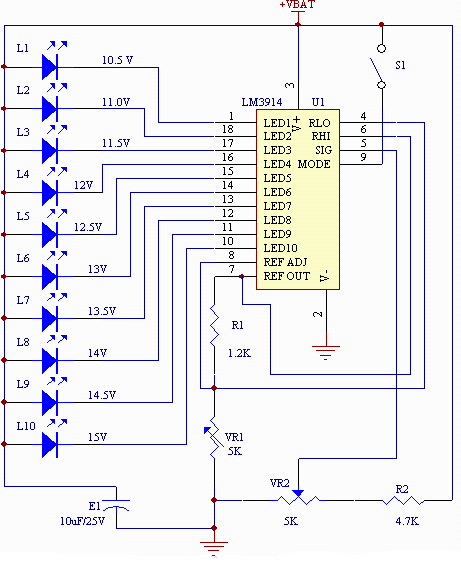
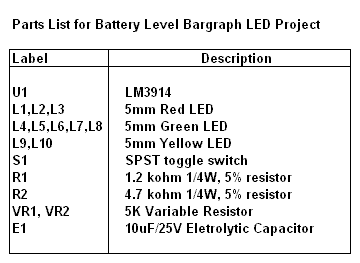






 LCD. The first way is to receive the command from the control center; second way is to manually send the alarm information to the control center with the push of a button.
LCD. The first way is to receive the command from the control center; second way is to manually send the alarm information to the control center with the push of a button.
 STAGE 4:
STAGE 4:
